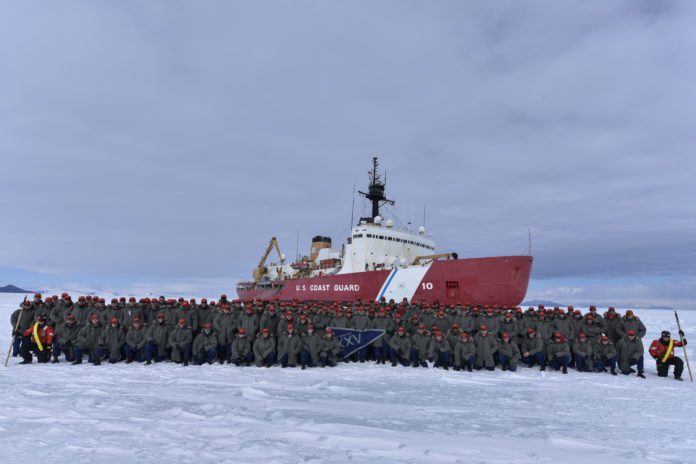
New chapter focuses on salmon vital to the health, cultures, food security of Indigenous communities
NOAA’s 2023 Arctic Report Card includes new information confirming that human-caused warming of the air, ocean and land is having a broad range impact across the Arctic region, which is warming faster than other parts of the world.
The overriding message from the 2023 report is that now is the time for action, said NOAA Administrator Rick Spinrad. NOAA and its federal partners have ramped up their collaboration with state, tribal and local communities to help improve climate resilience. At the same time, Spinrad said, the United States and the global community need to dramatically reduce greenhouse gas emissions driving these changes.
NOAA’s annual Arctic Report Card, now in its 18th year, includes the work of 82 authors from 13 countries.
It includes a section called “Vital Signs” which updates physical and biological changes, chapters on emerging issues, and a special report on the 2023 summer of extreme wildfires.
One new chapter in the report focuses on salmon species that are vital to the heath, cultures and food security of many Indigenous communities as well as to commercial fishing economies. The chapter notes that in 2021 and 2022 sockeye salmon reached record-high abundances in Bristol Bay, while Chinook and chum salmon that are fished along the Yukon and Kuskokwim rivers fell to record-low abundance. Declining fisheries have continued into the current year, resulting in harvest closures.
The report notes that sockeyes have been extremely successful under recent warm conditions, which allow them to grow faster in lakes as juveniles and may boost their survival rate when they migrate to the ocean.
The diverging impacts are affecting Indigenous communities that depend on the salmon for food, and challenging fishery managers as the different species respond in unique ways to the warming climate, the report said.
“We’ve seen heat waves in the ocean and heat waves on land, and salmon populations have been responding with extreme ups and downs,” said Erik Schoen, lead author of the salmon chapter and a fisheries scientist at the UAF International Arctic Research Center. Peter Westley, a scientist at the UAF College of Fisheries and Ocean Sciences, was also among the salmon chapter co-authors.
In 2022, 81% fewer king salmon returned than average to the Yukon River, a new record low and part of a long-term decline seen across the state. The cause of the decline is complex, and scientists have found possible links to water temperature, disease and declining body size.
Schoen said researchers know that king populations on the Yukon do worse when the adult salmon swimming upriver to spawn experience high river temperatures and low flow, which tend to be correlated with hot, dry years.
“There’s also a disease called Ichthyophonus that can interfere with a salmon’s ability to swim,” he said.
Chum salmon also recently collapsed. In 2021, 92% fewer adults returned to the Yukon than average. Unlike kings, chum populations had been stable. According to Schoen, “it came out of nowhere.”
The decline has been linked to unprecedented heat waves and loss of sea ice in the Bering Sea. Juvenile chum salmon ate lower quality food and put on less fat under those conditions, potentially reducing their survival rates.
The 2023 report card also features two chapters on the importance of implementing Indigenous knowledge for the future resilience of the Arctic. One chapter describes the work of the Alaska Arctic Observatory and Knowledge Hub, a collaboration between University of Alaska scientists and a network of Iñupiaq observers who are documenting long-term environmental change and social and cultural impacts on their northern Alaska communities.
Eleven University of Alaska Fairbanks scientists are among the authors of this 18th Arctic Report Card, including Rick Thoman, lead editor and a climate specialist at the UAF Alaska Center for Climate Assessment and Policy. Sections on salmon and working with local communities may be of particular interest to Alaskans, he said. That includes the report card models of a shift toward centering local Indigenous knowledge in Arctic research and decision making. UAF’s Alaska Arctic Observatory and Knowledge Hub is highlighted for its long-term work documenting environmental changes and impacts in northern Alaska using a coordinated network of coastal Indigenous observers.
UAF’s John Walsh, Rick Thoman, Tom Ballinger, Rick Lader, Uma Bhatt, Chris Waigl, and Skip Walker also co-authored chapters on the 2022/23 Arctic air temperature, precipitation and tundra greenness.













